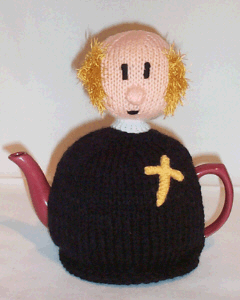 by S. Roberts
by S. Roberts Do you know someone who is football crazy? Is your Dad a footy nut? Is your brother a soccer Fanatic? This is possibly the bestest Crimbo pressie you can make them. You can make it fit any football team of your choosing, or add an assortment of football teams. You could also adapt this idea to make a net-ball, basketball, or rugby clock.
To make a Football Crazy Wall Clock you will need...
Paint, thick card or an old grocery box, a clock mechanism and clock hands (you will find these at craft shops) and a print out of pattern of football shirts which is available at the link below.
Colour the football shirts in the team’s strip you choose. You can colour them randomly if you wish. Number each shirt 1 to 12.
To make the clock face, draw around a large dinner plate or a tea tray onto some card. An old grocery box is great. Cut out two identical circles, and glue them together so that the lines in the cards structure cross, this will give the clock face extra strength.
Once the glue is dry, paint the clock face green. Again leave to dry. With white paint, paint on a centre line through the middle of the clock face, and paint a kick off circle in the middle of the clock.
Push a pencil through the centre of the clock face ready to attach the clock mechanism. Be very careful and use the old Plasticine trick - Put a ball of Plasticine on the table, put your card on top of it where you need the hole to be, and push the pencil through the card and into the Plasticine.
Arrange the football shirts on the clock face and stick them down.
Push the clock spindle through the hole and push on the hands. The mechanism has a hole for hanging the clock on the wall.
Put a battery in the clock and set the time.
Football shirts print out http://www.santaspostbag.co.uk/football-crazy-wall-clock.html S. Roberts is one of Santa’s Helpers and writes for www.santaspostbag.co.uk a Christmas educational & activity website. For more festive ideas & gifts to make visit http://www.santaspostbag.co.uk/homemade-christmas-gift-ideas.html
SantasPostbag is in association with http://www.bigboystoyz.com Together keeping Christmas Magical









 The kit includes: Stainless Steel Mesh
The kit includes: Stainless Steel Mesh




.jpg)






